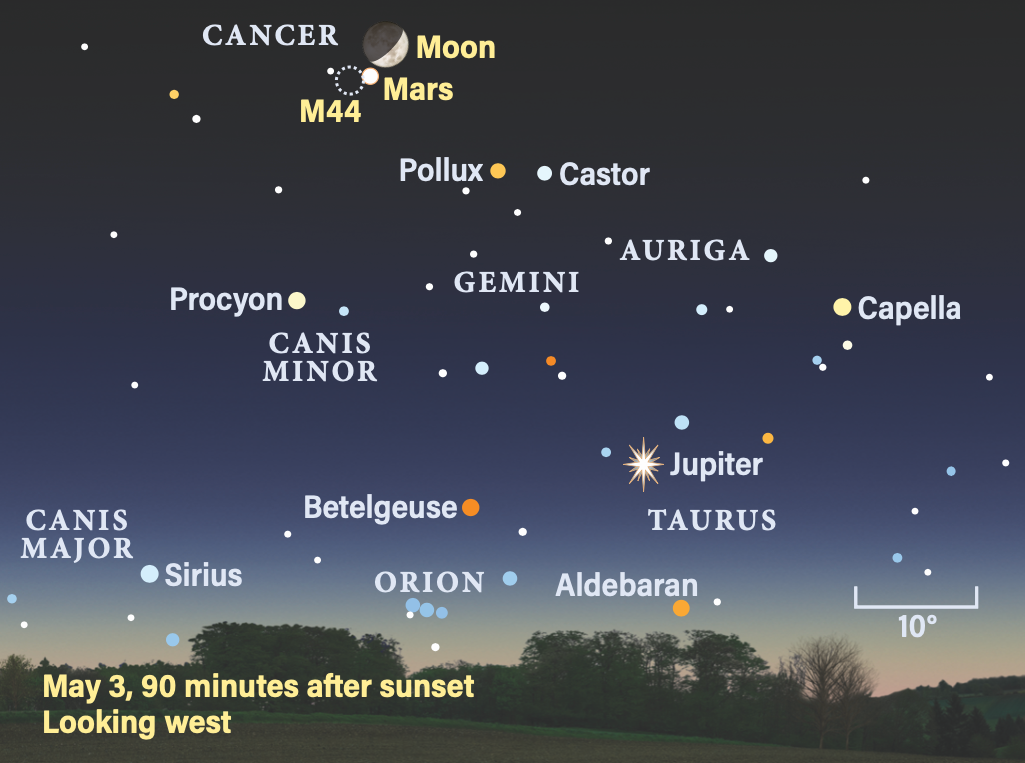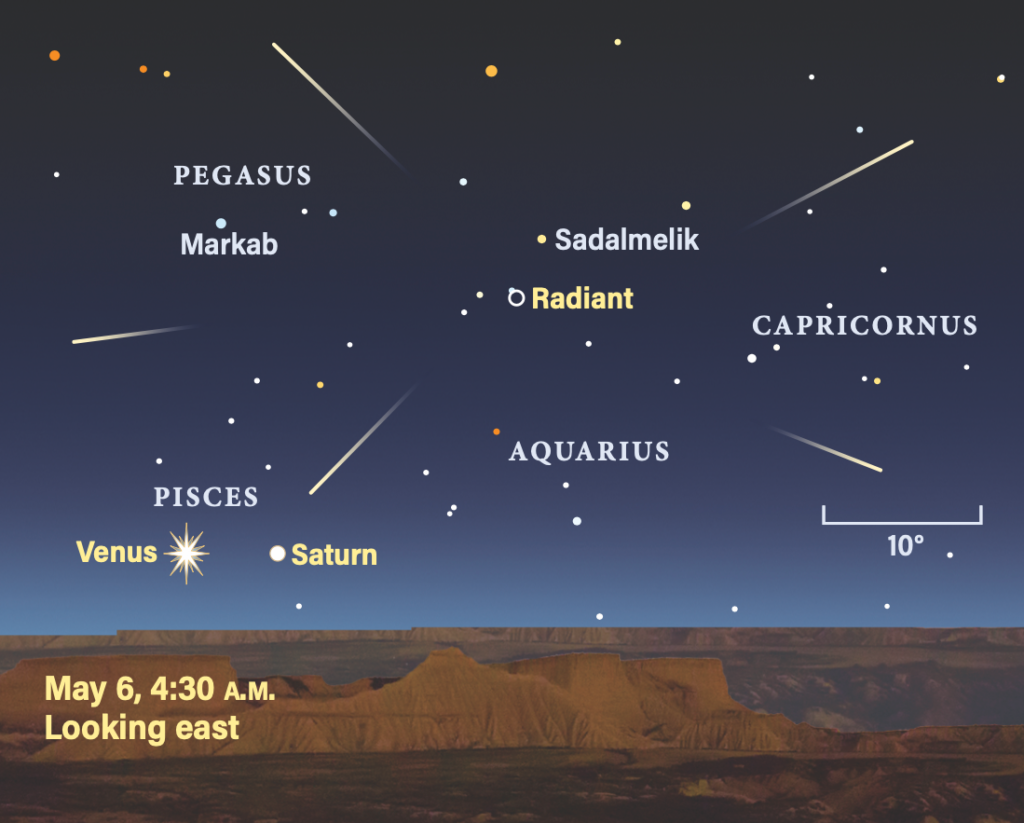
In the night sky this week, Jupiter is chilling in the constellation Taurus in the night sky this week. It’s visible high in the west after sunset and sets a few hours later.
Mars is hanging out nearby in Gemini, near the twin stars Castor and Pollux. It’s a bit higher up in the western sky than Jupiter, and its reddish color gives it away pretty easily. It is beside the Beehive Star Cluster, which is beautiful in binoculars. The moon moves past on Saturday and Sunday.
The bright object you see around an hour before sunrise in the east is Venus. It is gaining in brightness as it closes in on Earth’s orbit.
Look a bit to the lower right of Venus and you’ll find Saturn. Saturn experiences its equinox this week as the ring lines up with the sun’s orbit. The rings will disappear for a short period of time.

There is the Eta Aquariid meteor shower coming this week. The peak is May 6th in the early morning to the east. It averages around 10 meteors per hour coming from the debris of Halley’s comet. The shower is known for the long-lasting tails (trains) of the meteors.
And as the night stretches on, the familiar figure of Orion dips below the western horizon, while the striking shape of Scorpius rises in the east, tail first—bringing in hints of summer skies to come.
So, grab a blanket, maybe a telescope or binoculars, and enjoy the cosmic spectacle this week has to offer this week through May 9th. The night sky is putting on quite a show this week—let’s take a look at what’s up there!
